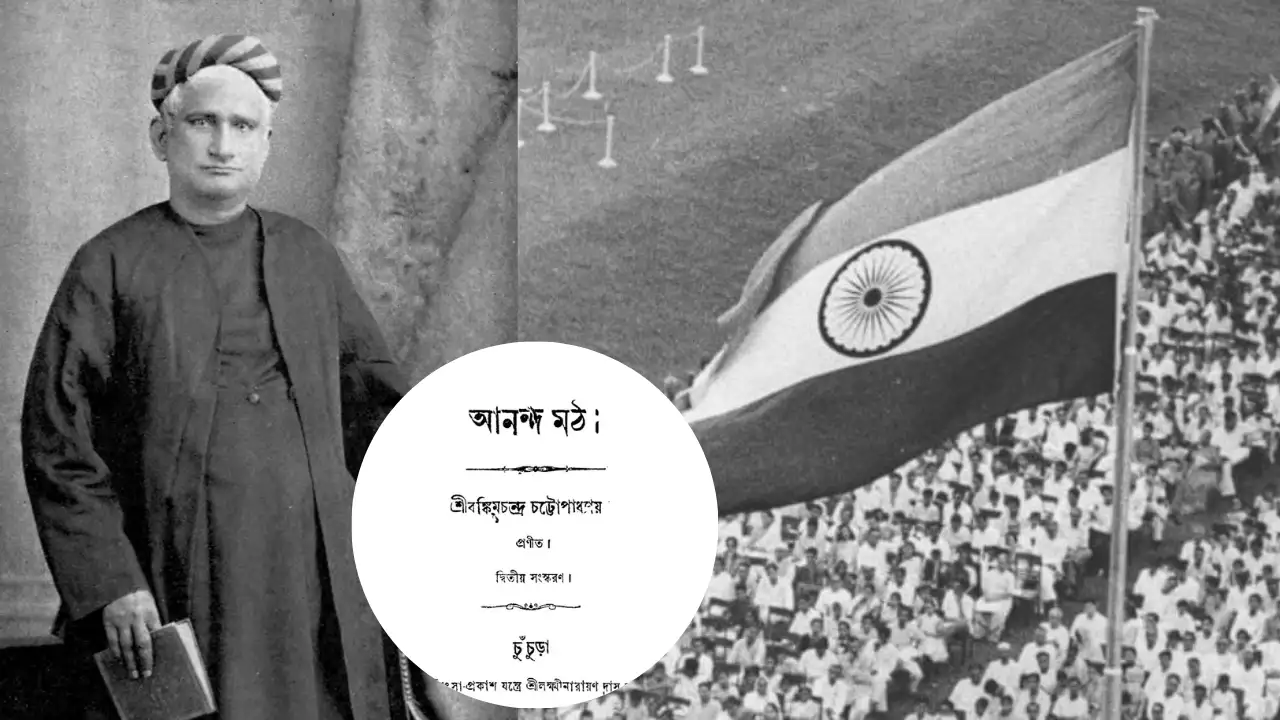Copyright timesnownews

150 years of Vande Mataram, a battle cry that was inspired by the Sanyasi rebel fighters, soon became the song of the nation. The song that literally translates to 'Reverence to Mother', is not to a Goddess, but to the country. The country that is no less than the goddess that has given birth to all. But, how did this become the National Song? In The religion of the Artist (1924), Rabindranath Tagore writes, "I was born and brought up in an environment of three movements, all of which were radically awakening...there was a second movement...Bankimchandra Chatterjee, who was the first pioneer in the literary awakening which happened in Bengal." Rightly so, it was Chatterjee, whose words are still sung as a song of unity today. The Beginning After Robert Clive gained the right of Bengal in August 1765 for the East India Company to collect taxes, he appointed Reza Khan as the virtual ruler of Bengal. However, it was Warren Hastings who restrained Khan by appointing company officers as supervisors, as a result, Khan increased taxes by 10 per cent, despite the fact that drought had crippled the local economy. This is when Sanyasis rose against it as warriors of the land. Dashnami Naga ascetics became active in Bengal, and found British as their enemies. The Dashnami Sanyasis were traditionally to collect debts from Zamindars, while the Sanyasis were entitled to Dakshina. However, with the increased taxes, the Zamindars appealed for a revision of the policy. However, the company to meet the revenue demands, re-adjusted or cancelled their debts to Sanyasis. They were now barred from collecting alms. As David Neal Lorenzen, a British-American historian and scholar of religious studies writes, "This led to animosity between the Sanyasis and the British." This started the Sanyasi revolution against the British, and it is based on such revolution that Vande Mataram became the war cry. Where Does Bankimchandra Chatterjee Comes In? It was in 1875 on November 7 when Bankimchandra Chatterjee had written the first two stanzas and was published in the literary journal Bangadarshan. A reverence to the Motherland, the theme of the song. Sri Aurobindo translates the lyrics: I bow to thee, Mother Richly-watered, richly-fruited, Cool with the winds of the south Dark with the crops of the harvests, the Mother! Her nights rejoicing in the glory of the moonlight Her lands clothes beautifully with her trees in flowering bloom Sweet of laughter and speech The Mother, giver of boons and bliss Then in 1881, Bankimchandra added four more stanzas in his the novel Anandamath (1882), which was based on Sanyasi rebellion. This is when Vande Mataram was penned in the novel and became the war cry against the British East India Company. However, it was not only the Sanyasi rebellion that had triggered him to pen down the poem which will go on to become the National Song. There were many instances. While Bankimchandra served as the deputy collector of Murshidabad district, stationed at Berhampore, on his way back to work, his palanquin disturbed a game of cricket played by Colonel Duffin, a British officer. Duffin was enraged, and ordered Bankimchandra to issue a public apology. Such instances provoked his literary work. Singing To Its Tune The work is not just done once the poem is penned down. The song was brought to life when the court musician of Panchetgarh, Jadunath Bhattacharya composed its tune. He was asked to set a tune for the poem just after it was written. While he was the original composer of the song, the song has been composed, tuned, re-tuned many times. Tagore publicly sung Vande Mataram in the 1896 session of the Indian National Congress. Vande Mataram - A Political Slogan In October 1905, a Bande Mataram Sampradaya was founded in North Calcutta to promote the idea of Motherland as a mission. Every Sunday, the members of the society would sing 'Vande Mataram', in Prabhat Pheris, with Tagore too sometimes joining them. In August 1906, an English daily titled Bande Mataram was launched with Bipin Chandra Pal being the editor, later joined by Sri Aurobindo. The daily spread message of self-reliance, unity, and political consciousness. A formal movement was also launched in February 1907 in Andhra Pradesh, which was involved boycotting of foreign goods and promoting indigenous products. In fact, the British administration was so alarmed by its influence, that it adopted stringent measures to curb it. If anyone was to chant Vande Mataram, a fine of Rs. 5 was imposed. This happened to 200 students in Rangpur in Bengal in November 1905. It was in 1907, August 7, when it was first used as a political slogan by Madam Bhikaji Cama in Germany and soon became widespread. She held a flag, on which these words were printed. Soon, the unfurling of the flag became symbolic as the resistance against the British Raj. Soon, the entire nation was singing the tunes of Vande Mataram, and on January 24, 1950, Dr Rajendra Prasad addressed the Constituent Assembly declaring that Vande Mataram would earn the same status as the National Anthem, making it the National Song of India. “There is one matter which has been pending for discussion, namely the question of the National Anthem. At one time it was thought that the matter might be brought up before the House and a decision taken by the House by way of a resolution. But it has been felt that, instead of taking a formal decision by means of a resolution, it is better if I make a statement with regard to the National Anthem," he said.



